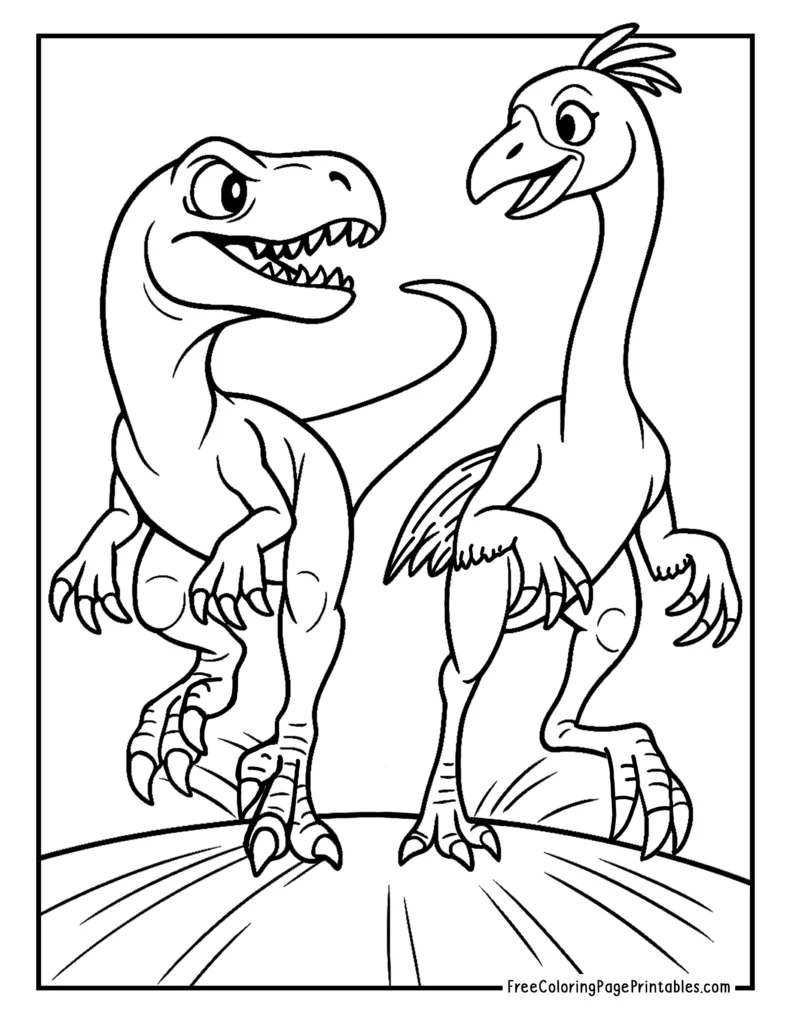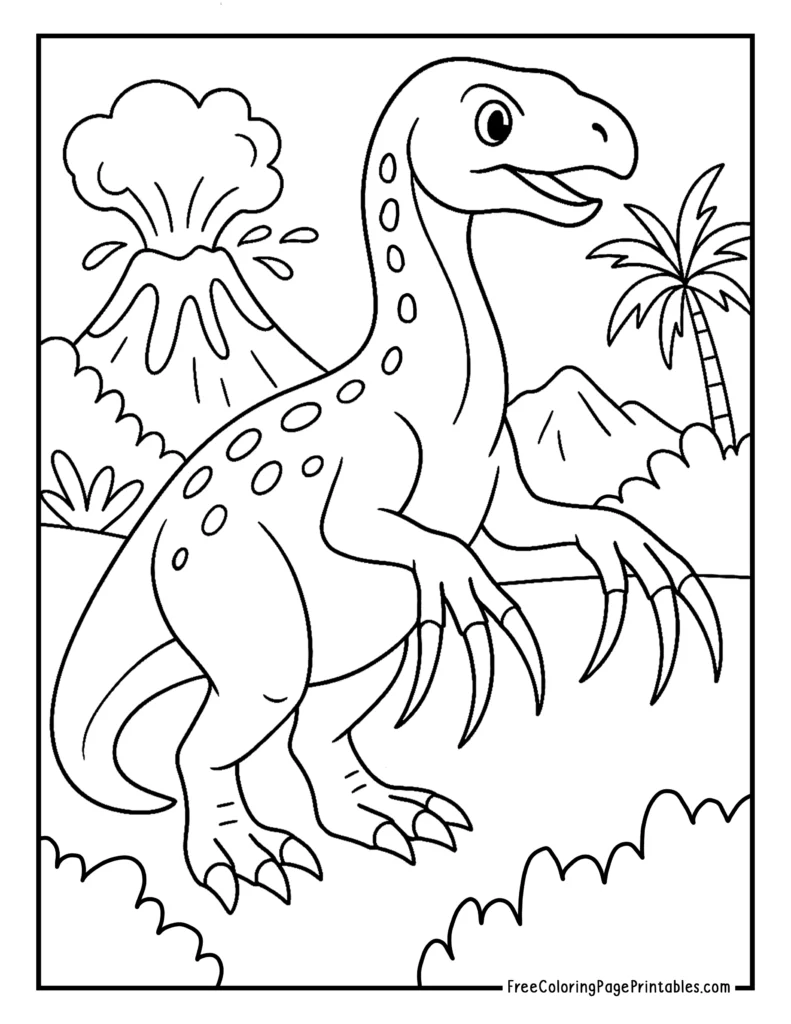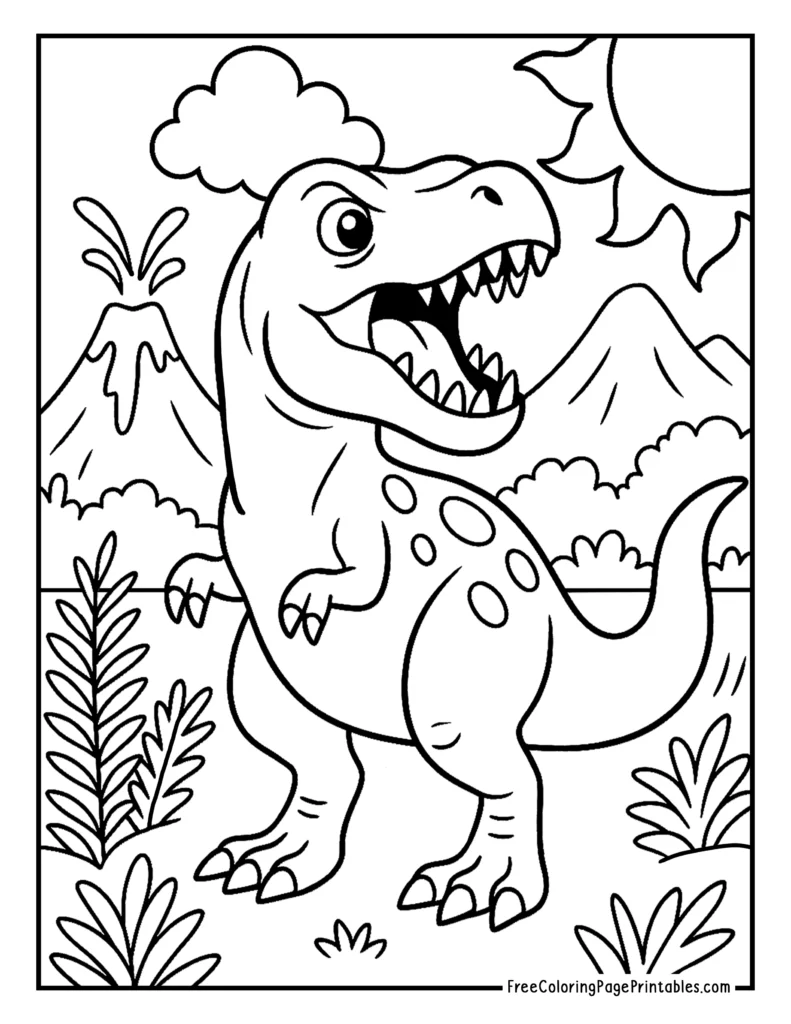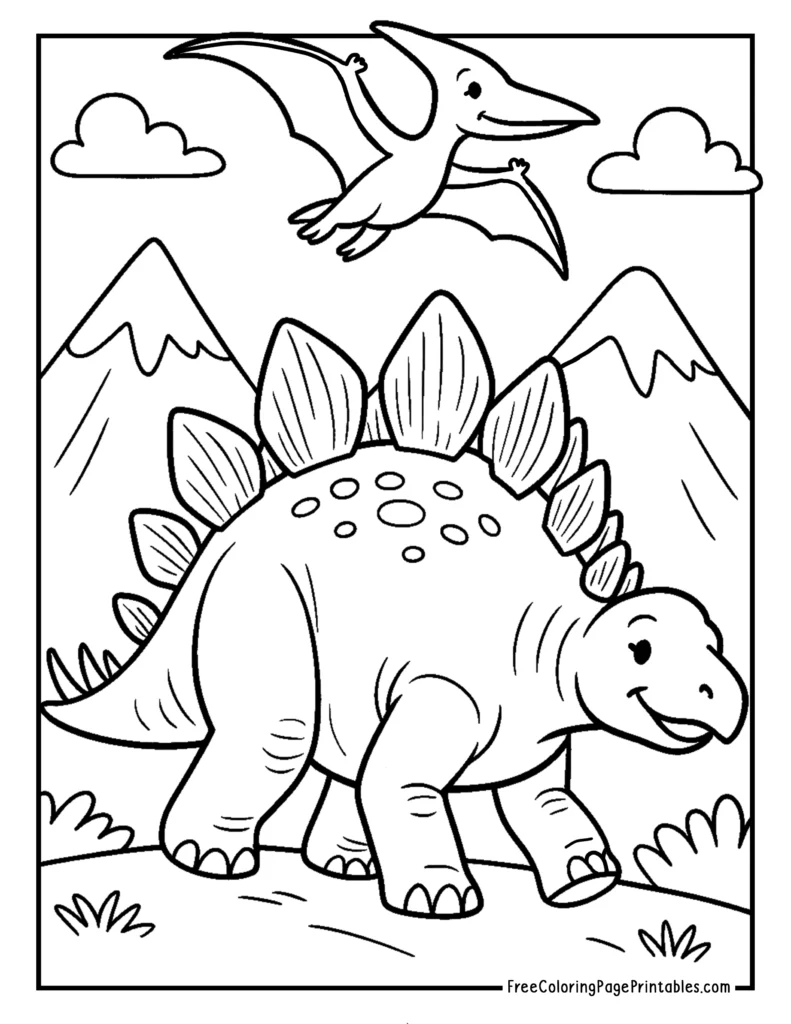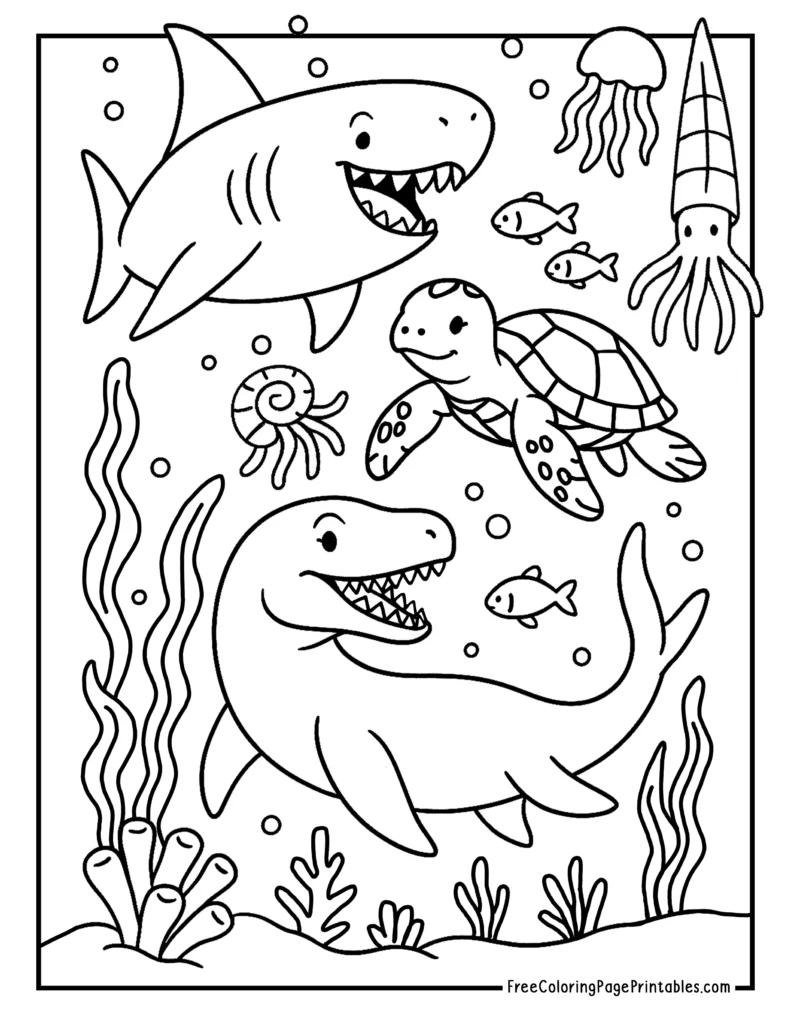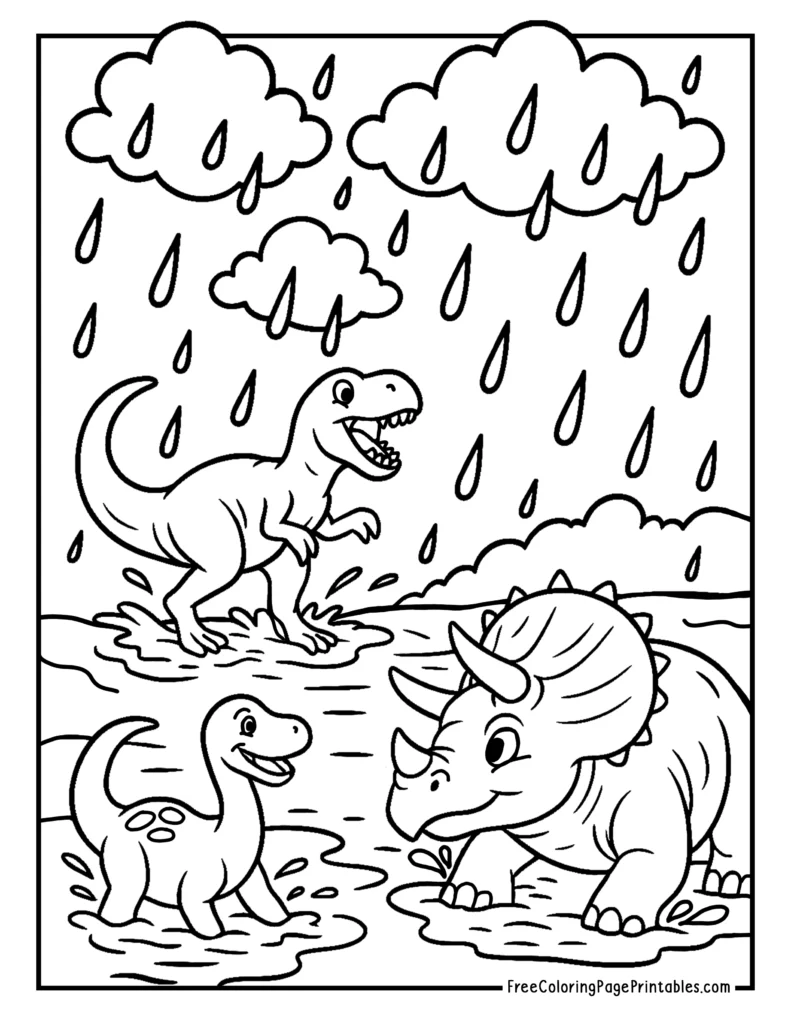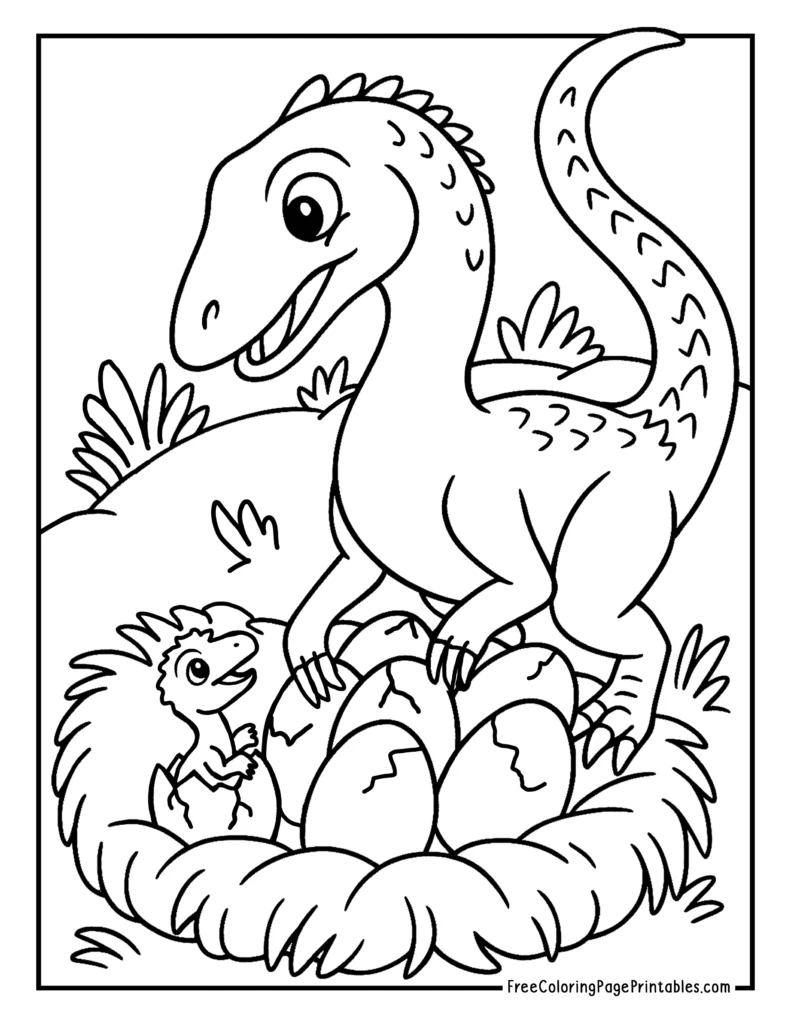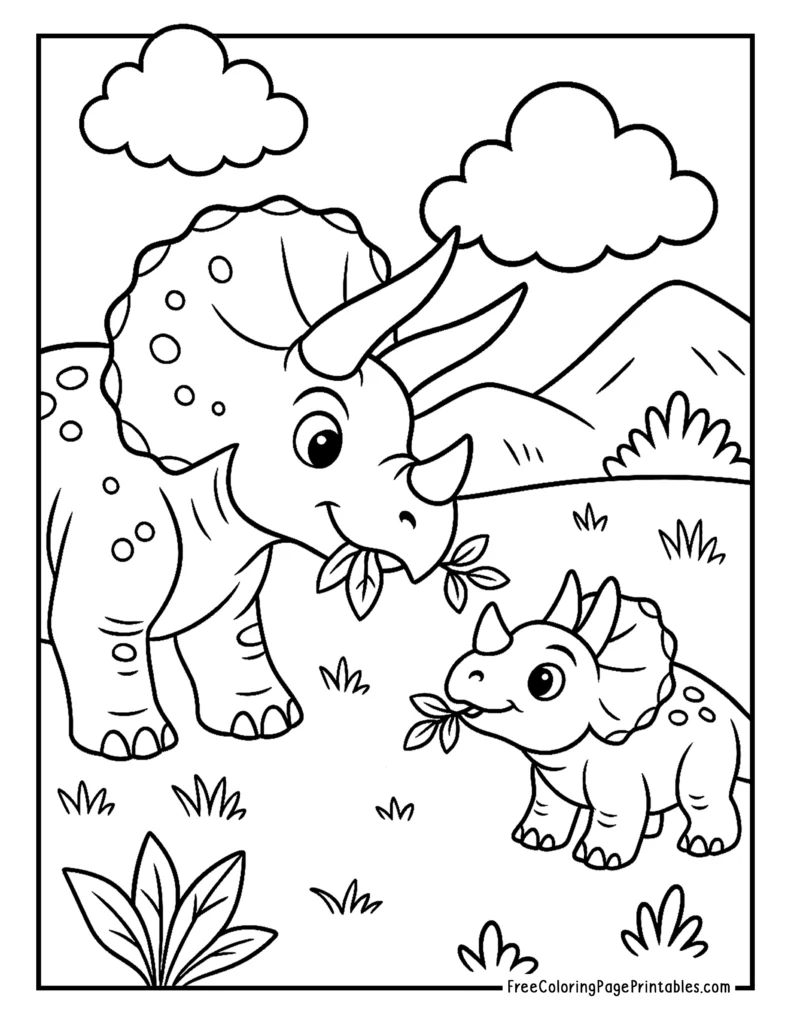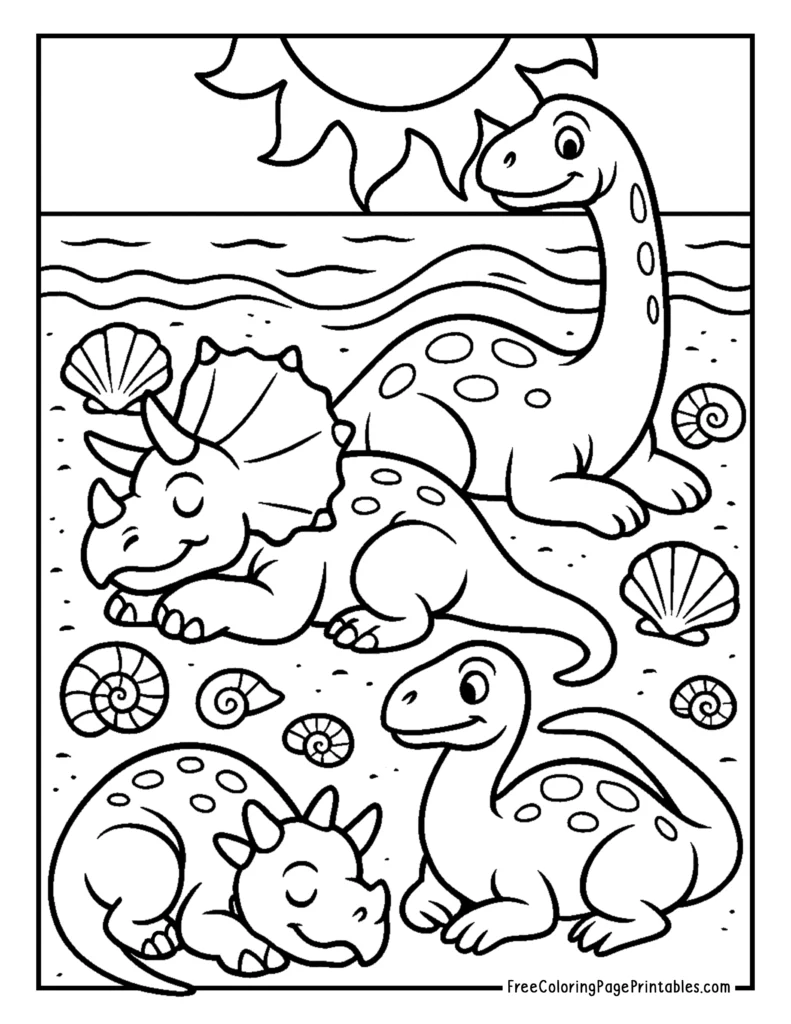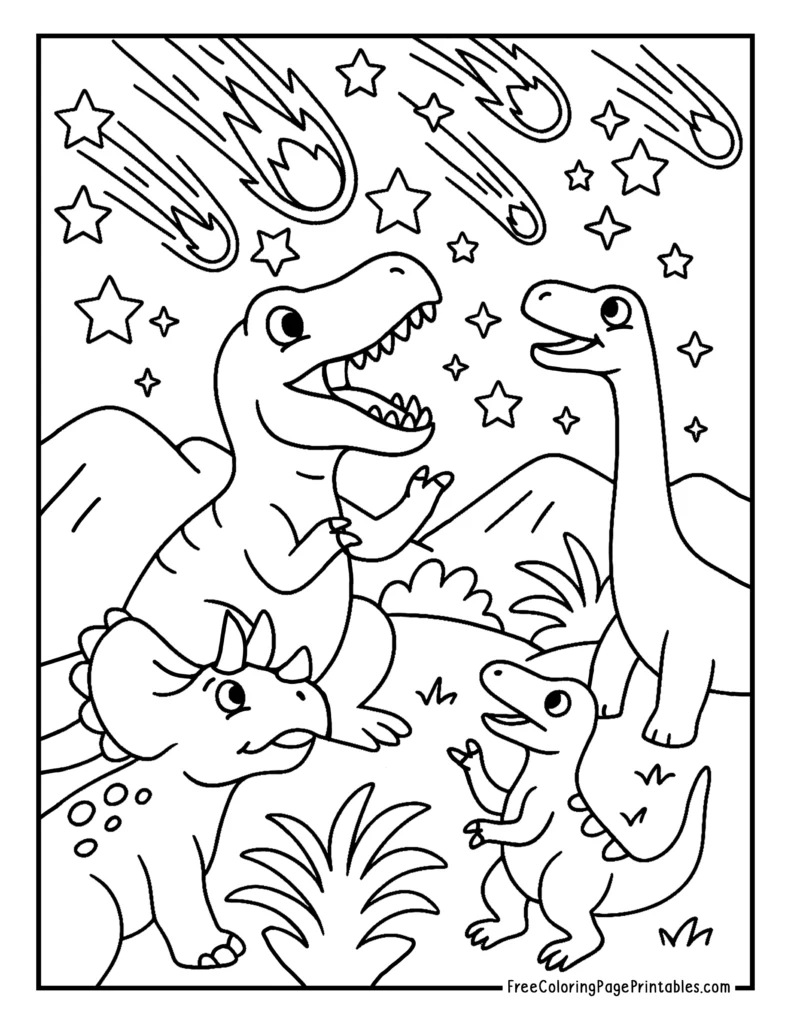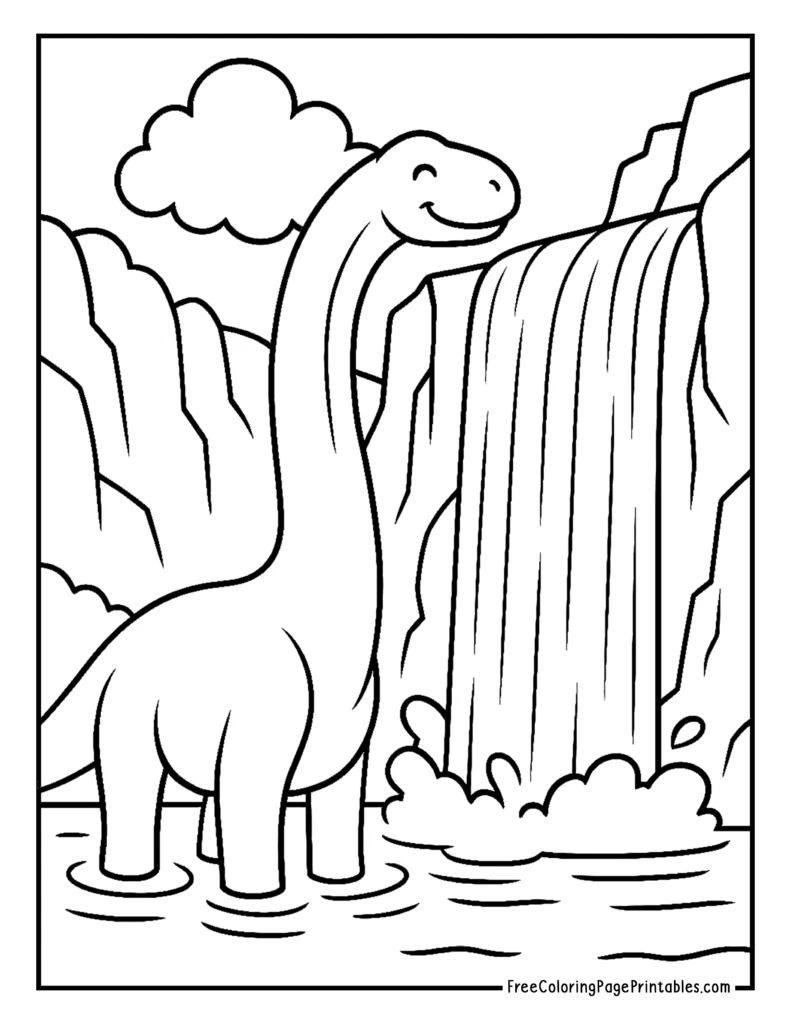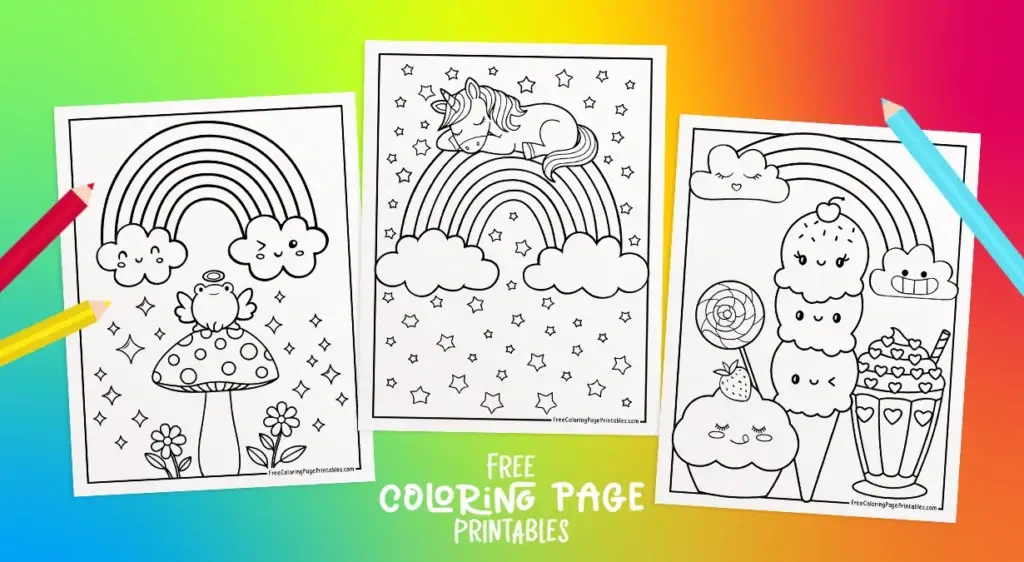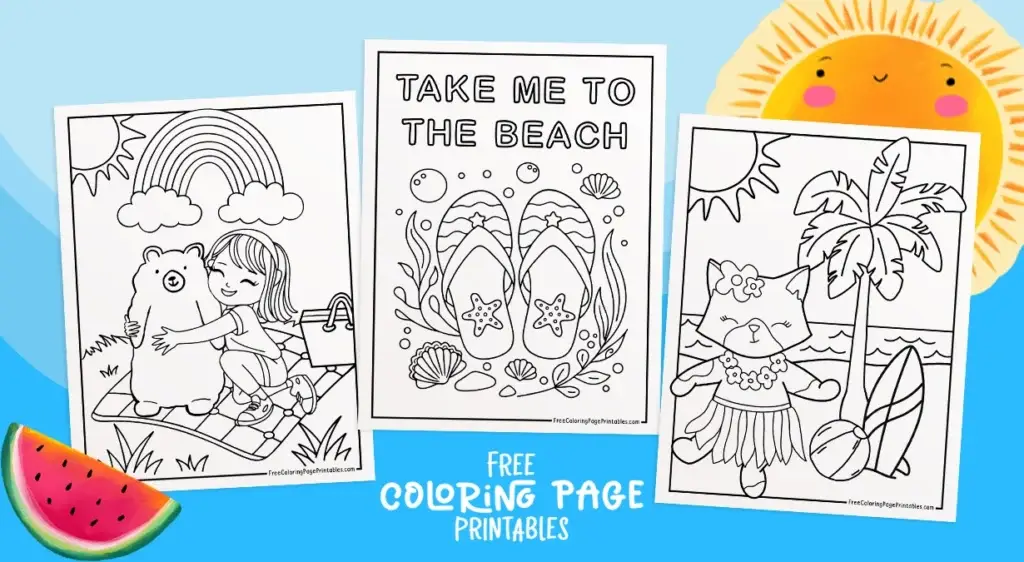Grab your coloring tools and stomp into a world where dinosaurs do more than just roar! They also explore, relax, and even stargaze! In this fun-packed coloring collection, you’ll find triceratops grazing in abundant fields, a mighty T. Rex posing bravely in front of a steaming volcano, and dinos lounging on beaches dotted with fossils and gleaming seashells. There’s even a magical comet shower lighting up the sky while curious dinos look on! From a mama troodon greeting her baby hatchlings for the first time to underwater adventures with ancient sea creatures, these pages are bursting with prehistoric playfulness! All you need is your favorite colors to bring them to life!
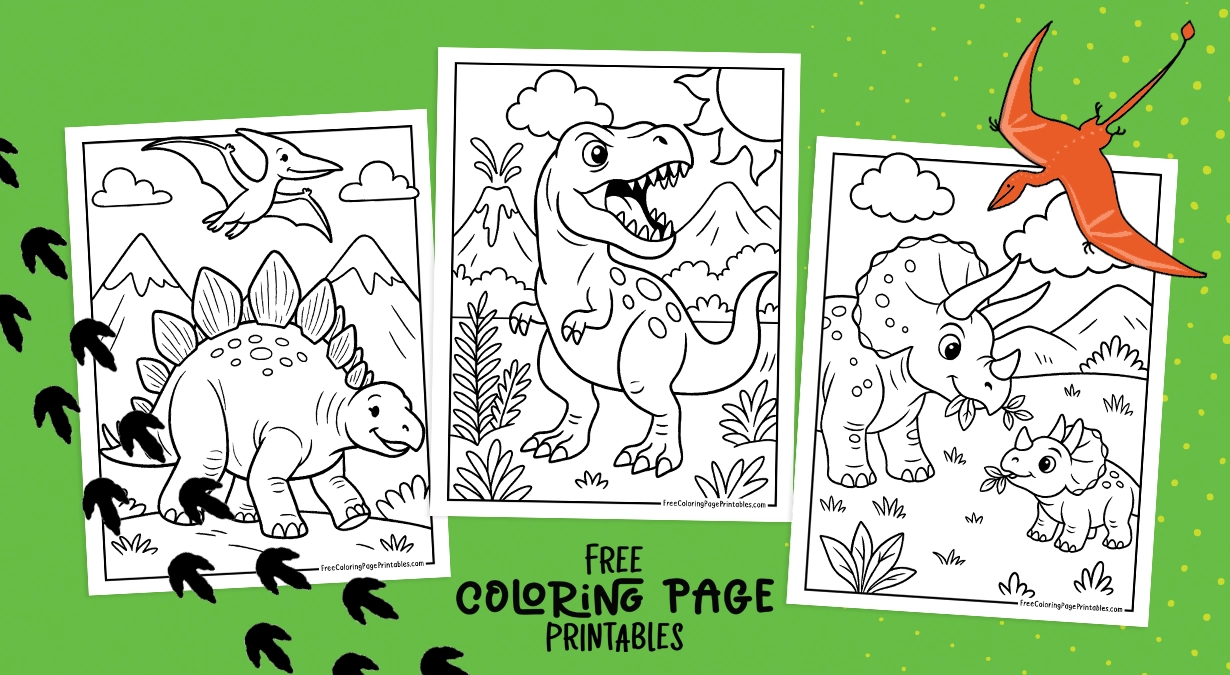
Important Information
All of our dinosaur coloring pages are free to download for personal or classroom use. No commercial use is permitted, and we do not authorize offering our pages for free download on any other website. We welcome links to our site if you would like to share!
Downloading Your Dinosaur Coloring Pages
Downloading is easy! Just click on the image or link of the coloring page you want to select and a PDF file will immediately open in a new window. Save the PDF file and print. Happy Coloring!
How Colorful Were Dinosaurs, Really? Fun Facts to Inspire Your Dinosaur Coloring Pages
When we think of dinosaurs, it’s easy to picture them as giant gray and scaly creatures lumbering through prehistoric jungles. That’s how they often looked in old books and movies, right? But what if we told you that dinosaurs might have been much more colorful than we ever imagined? Bright reds, shimmering blues, eye-catching stripes, flashy crests—scientists now believe many dinosaurs were anything but dull!
This exciting possibility opens up a whole new world for coloring artists who love working on dinosaurs. Whether you’re coloring a T. rex or a tiny feathered dino, it’s fun to realize that you can go wild with color and you still could be accurate!
Let’s explore some of the most fascinating facts about how dinosaurs may have looked, and how those discoveries can make your dinosaur coloring pages even more fun and imaginative.
Dinosaurs Weren’t Just Gray and Green
For a long time, people assumed dinosaurs looked like lizards and were limited to greenish or brownish shades, with maybe some gray or tan thrown in. But this idea mostly came from guesswork, since fossils don’t often preserve skin or feather color.
Then, starting in the early 2000s, paleontologists began finding incredibly well-preserved fossils in places like China. Some of these fossils still had imprints of feathers and tiny pigment structures called melanosomes. These microscopic clues gave scientists a way to figure out what colors some dinosaurs actually were!
The results were mind-blowing! Some dinosaurs had iridescent feathers, similar to hummingbirds. Others had black-and-white patterns, rusty red highlights, or even stripes and spots. This discovery opens up a whole palette of coloring possibilities!
What Kinds of Colors Did Dinosaurs Have?
Based on fossil evidence and comparisons with modern birds (their closest living relatives), here are some of the colors and patterns dinosaurs might have sported:
Reds and rusty browns: Some small, feathered dinosaurs likely had reddish or chestnut tones, similar to how modern birds use warm colors for display. You could imagine a Troodon—one of the smartest dinosaurs—sporting rusty brown feathers to blend in with the forest floor.
Black-and-white contrast: Modern birds often use sharp contrast to make a statement. A feathered Velociraptor might have had black plumage with striking white wing patterns and maybe even a bold splash of color on its head, like it was ready for a prehistoric fashion show!
Iridescent blues and greens: Some fossils show feather structures similar to today’s shimmering birds like hummingbirds and starlings. It’s totally plausible to imagine a sleek Ornithomimus gleaming in greenish-blue feathers as it darted through an ancient swampland.
Bold crests and frills: Dinosaurs with distinctive horns or frills, like Triceratops, may have used those features not just for defense, but also for display. Imagine a Triceratops with a brilliant purple and gold frill, or a bright red streak running down its horn.
Stripes and spots: These patterns likely served purposes like camouflage or signaling. A striped Spinosaurus could have blended into a watery marsh, while a spotted Therizinosaurus might have used its bold look to confuse predators—or just turn heads!
So go ahead and color that Velociraptor with turquoise feathers and orange stripes! Give your Stegosaurus brightly-colored plates on its back. Who’s to say it wasn’t possible?
Feathers? On Dinosaurs?
Yes! While we used to think only birds had feathers, scientists now know that many dinosaurs—especially the smaller, bird-like ones—had feathers too.
Feathers didn’t always mean flight. Some were for warmth and others were for show. If you’ve ever colored a bird in rainbow shades, you already have a head start on designing dazzling dino-plumage.
Here are some great candidates from your coloring page crew for fabulous feather fun:
- Velociraptor: Small, fast, and almost certainly feathered. Try feathering it in sleek black with green iridescence—or give it bright accent colors just for flair.
- Troodon: Smart and likely fluffy! Its large eyes suggest it may have hunted at dawn or dusk—maybe with soft gray feathers speckled in twilight purples or oranges.
- Therizinosaurus: With giant claws and a strange shape, this one likely had feathers for insulation or display. Imagine its shaggy coat in deep jungle greens, or a mix of chocolate brown and gold.
Even though giants like T. rex and Spinosaurus probably weren’t fully feathered, young ones might have had some fuzzy covering—so don’t hold back if you want to give your baby T. rex some adorable dino fuzz in pastel shades!
And while underwater predators like Megalodon and Mosasaurs wouldn’t have had feathers, they can still be stunning in ocean blues, silvery grays, or even fantasy colors—try swirling color patterns to mimic waves or bioluminescence!
Dinosaur Skin Could Be Colorful Too!
Even dinos without feathers might not have been dull-colored. Many reptiles today, like chameleons, snakes, and lizards, show vibrant patterns and hues. Some can even change color! So it’s not a stretch to imagine dinosaurs with stripes, spots, or even bright warning colors—especially on their faces, tails, or crests.
Use your imagination to give your Stegosaurus some rainbow plates or your T. rex a sunset-hued back. There are no “wrong” choices, just prehistoric possibilities!
Dinosaur Coloring Page Tips Inspired by Dinosaur Discoveries
To make the most of your dinosaur coloring pages, try these fun ideas:
- Use real bird colors as inspiration. Flamingos, peacocks, toucans, and parrots are all modern-day dino relatives. Their bold and surprising colors are great starting points.
- Mix and match textures. Use bold lines for scaly skin and soft strokes or dots for feathers.
- Try ombré effects. Blend colors gradually for frills, tails, or wings—like a sunset across a dino’s back.
- Let different parts shine. You can highlight claws, horns, eyes, and crests with metallic or neon colors to make them pop.
Color and Dinosaur Coloring Pages Go Together!
In the end, we may never know exactly what every dinosaur looked like, but that’s part of the fun! Science gives us some clues, and the rest is up to our imagination.
Coloring is an opportunity to bring these prehistoric creatures to life in your own style. Whether your dino is carefully camouflaged in earthy tones or showing off with bright neon colors and glitter, every coloring page is a playground for your creativity.
So the next time you pick up your crayons or markers, keep in mind that dinosaurs were just as colorful, unique, surprising, and interesting as the rest of the animal kingdom still alive today!

